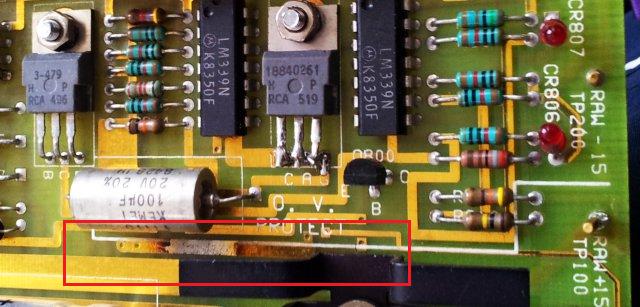…coming back to the 3326A repair, a slight mystery remains – at one time in the past the over-voltage protection circuit must have been triggered, destroying not only the SCR, but also damaging some quite large traces on the board. Typically, the SCR is just switched on for a few milliseconds, before the mains fuse will blow, with no damage of any trace. Typically, these HP devices are well engineered, so there is only a small chance that they didn’t design the system right, to the extend that power would be provided to the board for any length of time even with the over voltage protection circuit triggered.
Now, the 3326A has passed a 24 hour run-in and multiple power cycles, time for the final safety check which I perform on any instrument repaired, like, checking the ground resistance, checking the isolation resistance, checking the mains fuse rating, etc.
THE FUSE. SOMEONE MUST HAVE BEEN FULLY CRAZY, AND PUT IN A 20 AMP FUSE!!!
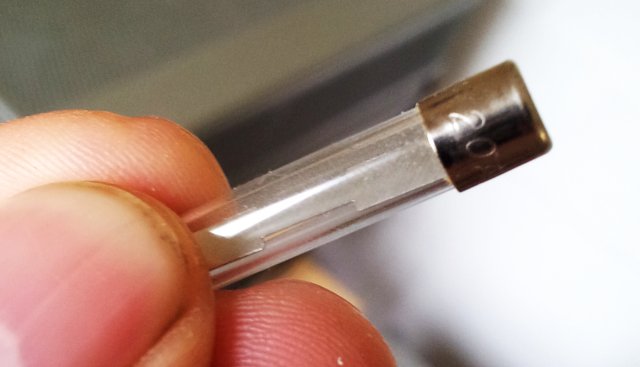
That’s why the over voltage circuit didn’t work, and presented a fair risk of fire and instrument damage, of an instrument, sold at over USD 10k, 1990 dollars.
The fuse rating – 3 Amp, normal blow.
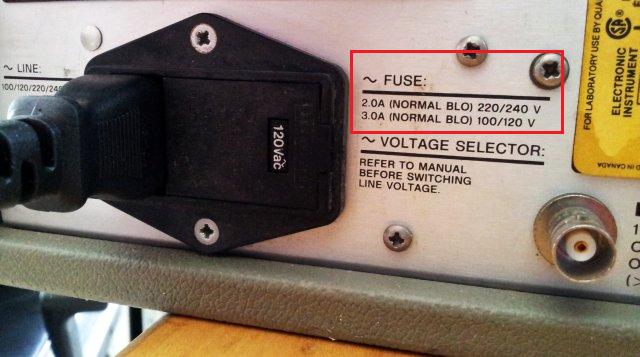
And a big warning sign, hard to overlook.
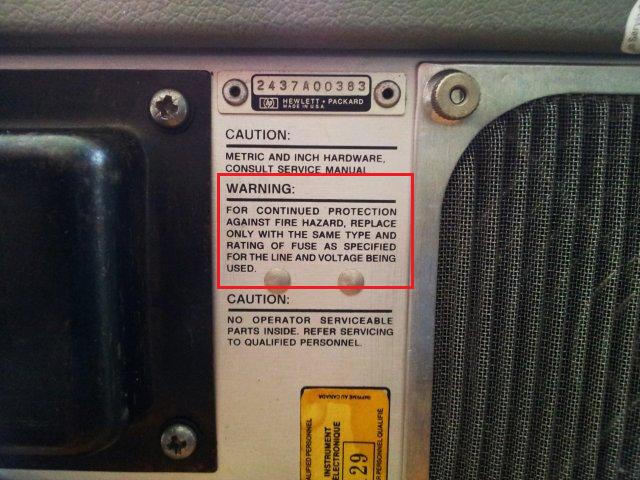
But what is a normal blow fuse? In the US, fuses are actually rated by the manufacturers, and standardization is well above the level of fusing time, etc. – two types are typically sold, ‘Slow Blow’, and ‘Fast Acting’. Slow blow fuses are easily idenfied, they either have the wire wound around a ceramic core, or are filled with sand.
Found this document, related to ‘normal blow’ – as it turns out, these fuses are actually identical in rating to the typcial ‘Fast Acting’ fuses that I have in stock here.
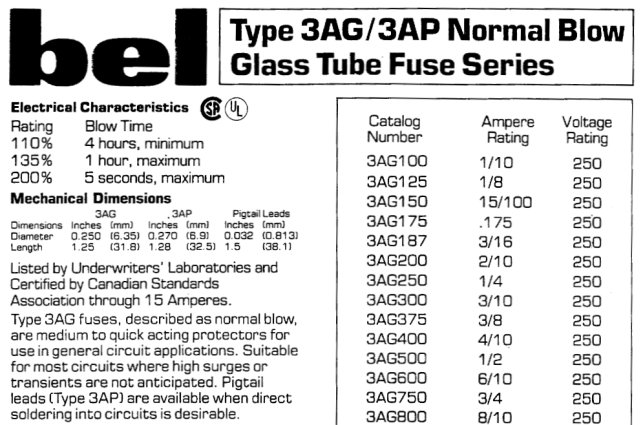

Well, there might still be some tiny difference of the original, HP branded ‘normal blow’ fuse, but test shows that a regular 3 Amp AGC ‘Fast Acting’ fuse is working perfectly find. So for the time being, we can just consider ‘Normal Blow’ and ‘Fast Acting’ fuses to be identical. How easy would be the world, if all things were build according to common, well-established standards. At least, for the fuses.

